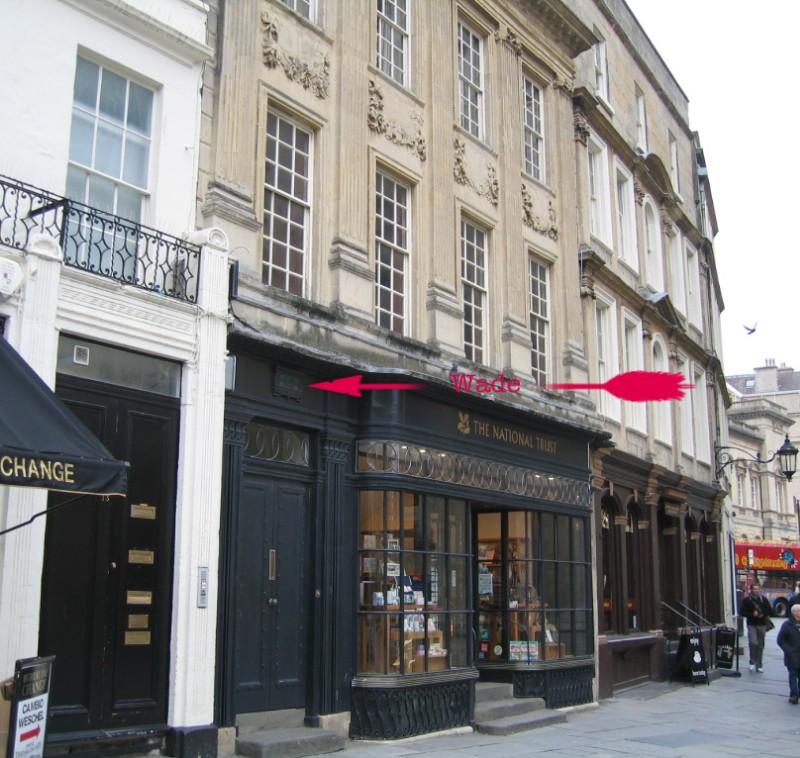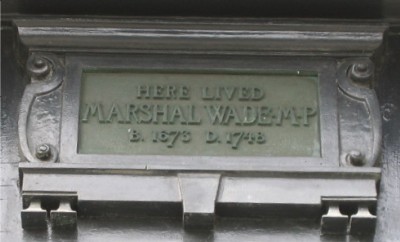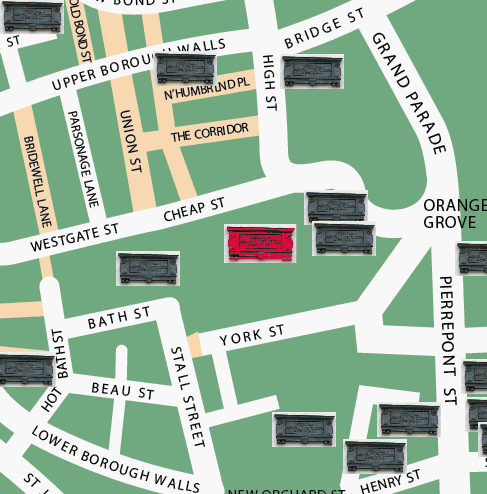Field Marshal George Wade
Who was he?
Wikipedia:
Field
Marshal George Wade (1673 – March 14, 1748) served as a British
military commander and Commander-in-Chief of the Forces. He is
best
remembered for his role in disarming and pacifying the clans
after the Jacobite Rebellion of 1715, and for the network of roads
and
bridges he built in the Scottish Highlands.
Why was he in Bath?
The years Wade spent abroad on one campaign after another left
very
little time for his family. It was now time to set about finding a
permanent residence in London and Bath.
What were the attractions of this small city [Bath] that prompted
Wade
to give up his seat as the Member of Parliament for Hindon in
Wiltshire
and put himself up for election in Bath? He was duly elected in
1722
and served as the Member of Parliament for Bath for twenty-six
years.
Bath at that time was a walled city, entered by four gates, and
even as
late as 1728 the city comprised some 400 to 500 old houses crowded
into
a small area – no more than fifteen streets, sixteen lanes, five
open
spaces, four terrace walks, and a few private ones… One visitor
described the city as standing in a hole, and built on a quagmire.
Apart from the healing waters, there was little to recommend it.
It
relied on its cloth trade and was home to no more than 2,000 to
3,000
people.
By the time Wade came to Bath, it was already host to the rich and
famous. Royalty, senior military figure, statesmen, aristocrats,
country squires, all manner of tricksters and card sharps flocked
there. Royalty put an early stamp of approval on the city by their
visits: it was undoubtedly continuing royal patronage which
transformed
Bath from a mere watering place into the unique resort of the
fashionable world.
The most important service the General rendered to the city was
the aid
he gave in clearing the houses clinging to the north side of the
abbey.
Clearance would prevent the church (which had become a common
thoroughfare) being used by persons passing to the baths. Wade
further
persuaded the corporation by a money grant to demolish sixteen
houses
to make a passageway from the Abbey Churchyard to his new home.
The
route was thereafter known as Wade’s Passage.
William Wade (1734-1809) was the great-nephew of George Wade
(grandson
of George’s brother William). In 1769 he was elected master
of
ceremonies at Bath. Wade restored some of the respect for the role
of
master of ceremonies as established by Nash. He also supervised
the
building in 1771 of the New Assembly Rooms – at £20,000 the
town’s most expensive 18th-century structure.
[Chantrey 2009]
Location of Wade's house at 14 Abbey Churchyard:


The text reads
"Here lived Marshal Wade M.P. b 1673 d. 1748"
Location map of 14 Abbey Churchyard:

(c) 2019
Bath-Heritage.co.uk | Contact us|




